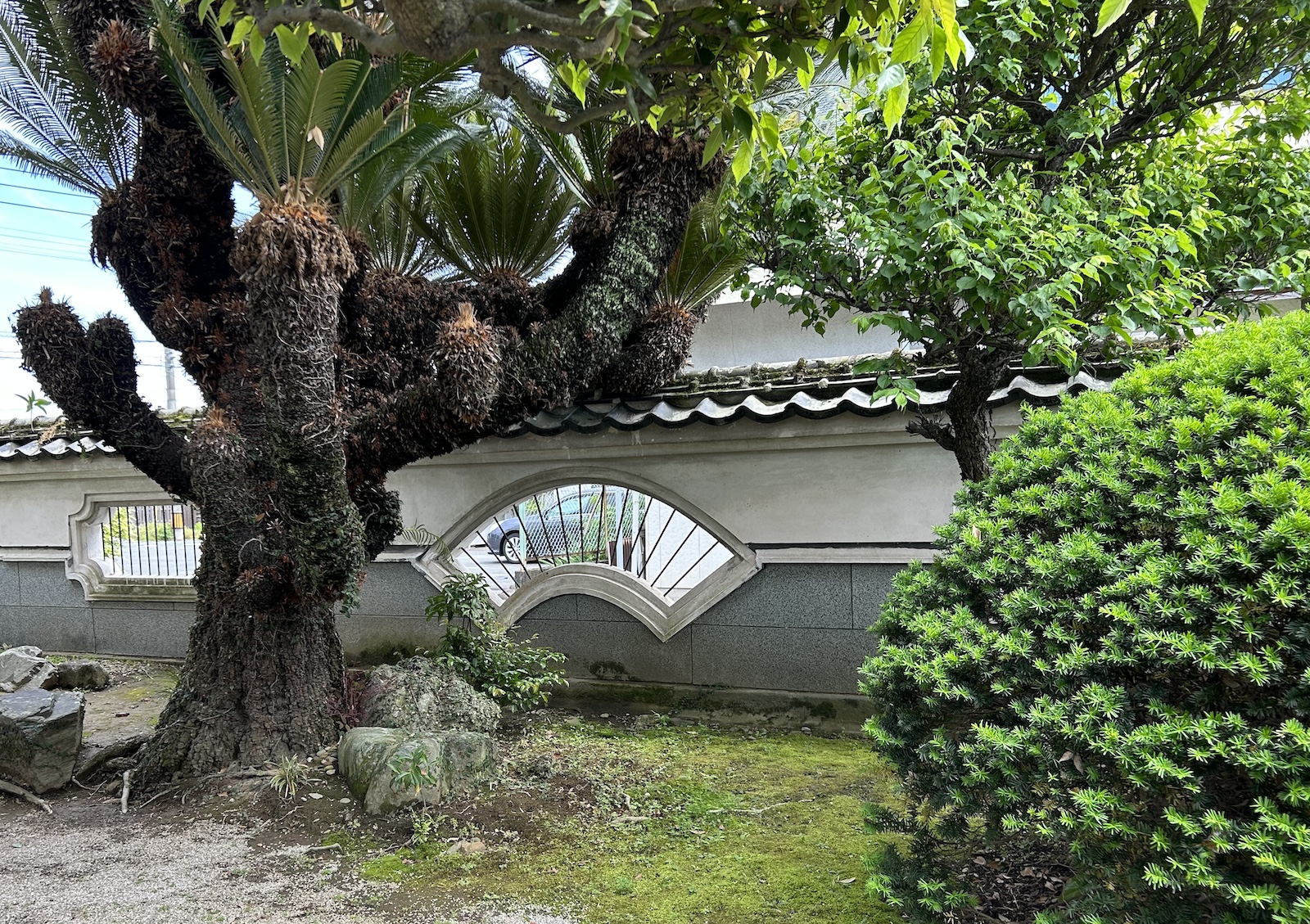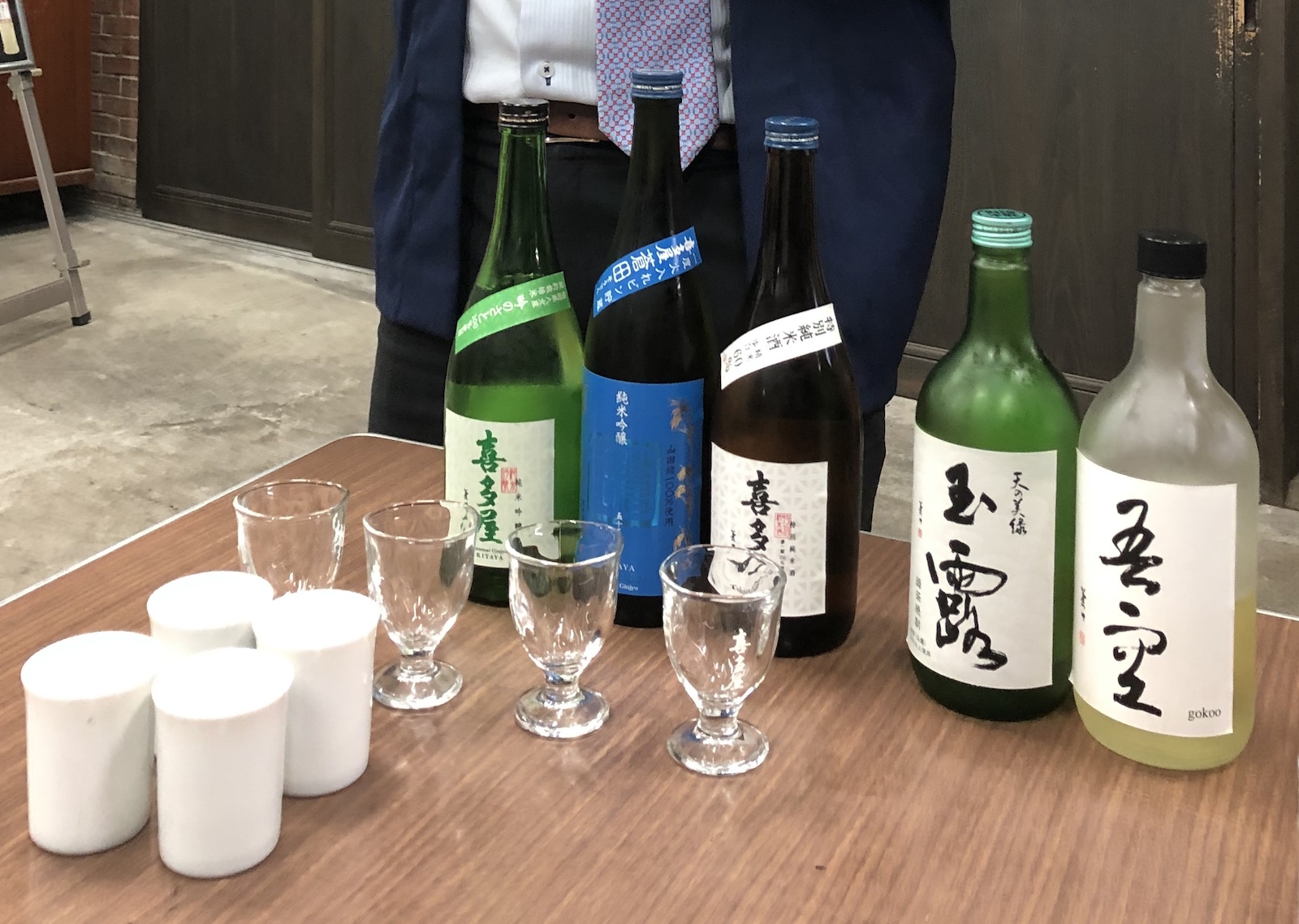The southern Fukuoka Prefecture town of Yame is perhaps best known as a major tea producer. But the town also offers a broad swathe of distinct sights and experiences, providing visitors with the vibrant sense of traditional Japan. Visit a sake brewery or enjoy a sake tasting at a local liquor store. Try your hand at paper making. Stroll streets that still boast merchant houses from Japan’s early modern times, and maybe even stay overnight in one.
Especially during the Edo Period (1603-1868), the town’s position near the Yabe River made it a center for trans-shipment of both raw materials and processed items, which could be taken downriver to the Ariake Sea and then on to larger population centers, including Edo (modern-day Tokyo).
Turning raw materials into hand-crafted items, like cabinets, dishes or paper, or processed foods items, like soy sauce, miso or sake, offered an economic boost to artisans and merchants, the two social classes at the bottom of the Tokugawa hierarchy. And that creative legacy continues in Yame.
Traditional Handicrafts
The Yame Dento Kogeikan (Yame Traditional Handicrafts Center) is a great place to begin a visit. The center is a clearinghouse of various traditional handicrafts practiced, or even perfected, in Yame. Among Yame’s most famous products are butsudan (traditional Buddhist cabinets for honoring ancestors), both stone and paper lanterns, hand-woven bamboo baskets, bamboo screens, hand-made washi paper, wooden tops, and traditional Hina dolls.
All of these are displayed and sold at the Dento Kogeikan, and some, including basket weaving and paper-making are also demonstrated there from time to time.

Visitors can also try their hand at washi paper-making. Yame’s paper-making tradition dates back to the 13th century. The key ingredients are kozo (mulberry) and mitsumata (oriental paperbush), lending the washi both strength and elegance. Yame’s paper-making tradition contributes to the town’s paper lantern craft as well.
Yame Dento Kogeikan is open Tuesday through Sunday, 9:00-17:00 and is free to enter. The washi-making experience can be done between 9:00 and 15:30 and costs between 800 and 1,000 yen, depending on what kind of paper one chooses to make. Options include postcards with dried flowers embedded in them and a finer kind of writing paper.
The experience takes between 30 and 60 minutes, and the paper is ready approximately 30 minutes later. The waiting time can be used to explore the handicrafts on display in the rest of the center.

Or, depending on the time of day, step across the parking lot to the tourism and commerce center and have a lunch of dago-jiru, a hearty dumpling soup that is another Yame tradition.

Traditional Merchant Houses
Just a walk through the heart of Yame reveals all kinds of intriguing spots. The area is especially well known for its well-preserved merchant’s houses. By the late Edo Period, most members of the samurai class were relatively impoverished and merchants, while lower in status, had most of the wealth. As a consequence, many lived in style in Igura houses that combined their commercial establishment with fine living quarters. There are said to be as many as 150 extant in Yame. Many are in a half-timber style with wooden cladding around the ground level but white plaster walls above.

Even plasterers working on such buildings were fine artisans and they often added intriguing artistic embellishments to their work. Look closely and you might see bas-relief fruit and vegetables, or even a little mouse poking its nose toward a window.
Just strolling the streets of the Fukushima district is fun and visually interesting; here and there houses and gardens that have been restored to their nineteenth century splendor are open to visitors. Others have been converted to coffee shops, cafes or small craft shops. Poke around a bit more to find more artisans at work, making traditional paper lanterns and other Yame handicrafts as part of a young movement to preserve the best of Yame’s traditions.

Be on the lookout for small statues of Ebisu, the god of merchants and fishermen. They are dotted around the streets, protecting the commercial activities of the district.
Not far away, the Nipponia hotel chain has renovated a traditional machiya into high class traditional style accommodation. One or two other machiya in the neighborhood have also been or are being renovated to offer the same type of overnight experience. Craft Inn Te has gone a step further, with each of their machiya rooms themed to an aspect of Yame’s craft traditions: indigo, washi, bamboo, etc.
Yame’s Sake Tradition
Yame’s strategic position also endowed it with sweet water and access to plenty of tasty rice, the essentials for making excellent sake.
The Kitaya sake brewery has been brewing sake since 1620. Its brews are the recipients of many awards and it even exports its product overseas. Kitaya is so well-known that restaurants often ask them to develop sakes specifically to pair with the restaurant’s food. Interestingly, the flavors of sashimi can vary so much that Kitaya strives to pair its sake with the soy sauce used, rather than with the fish.

While the sake is excellent and tastings are available, it is also housed in a beautiful heritage-listed building that is worth checking out. And don’t miss its giant sugi-tama, the cedar ball that brewers use to tell them when the sake is ready to drink.
Another spot to seek out a sake tasting is the Sakaguchi Liquor Store just a few doors from the Nipponia. If sake isn’t your style but you are in need of refreshment, Café MITOTE, just next door, offers coffee and excellent sweets in another restored machiya environment.
More Ancient Remnants
Before the Edo Period, Yame had the makings of a castle town, as the local lord had constructed a small flatland castle for one of his sons. Alas, the castle, known as Fukushuma Castle, had to be dismantled in the early seventeenth century on the shogun’s orders since no fiefdom was permitted to have more than one castle within its borders. The foundations of the old castle can still be seen in Yame Park.

Not far away, sweet little Fukushima Hachiman Shrine sits on the edge of a canal that likely once was intended to serve as part of the castle’s moat. This shrine, dedicated to Ojin, a third century emperor said to have been born in Kyushu, and his mother, Empress Jingu. Curiously, it was established shortly after the castle was razed as a satellite of Tsuchihashi Hachiman Shrine, a guardian of the castle, yet it is now the larger and more popular shrine. Although it is not particularly large or grandiose, it is obviously a popular spot.
Getting There
Yame is most easily visited by car. In spite of its historically strategic location, it is not well serviced by public transportation. There is bus service (about 20 minutes) from Hainuzuka Station on the Kagoshima Honsen train line and from Kurume Station on the Nishitetsu train line (about 40 minutes). The historic center of Yame and its craft traditions are easily explored on foot.
Vicki L Beyer, a regular Japan Today contributor, is a freelance travel writer who also blogs about experiencing Japan. Follow her blog at jigsaw-japan.com.
© Japan Today















No Comment
Login to comment